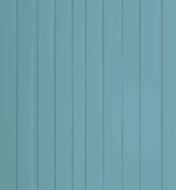


The 3 Things Required for Metal to Corrode:

If you can eliminate one of these factors, corrosion can be significantly reduced or prevented.






If you can eliminate one of these factors, corrosion can be significantly reduced or prevented.



Despite resting nearly 12,500 feet below the ocean’s surface, surrounded by water, the Titanic remains relatively intact due to the low oxygen levels at this depth.


















Conquer moisture and you have conquered the world...of rust! – Dr. Dry, the Desiccant guy







We cut through the technical jargon and the shop talk to provide a straightforward overview on the essentials of desiccants for those on the front lines of industrial manufacturing looking to protect metal/metal parts in process, storage or transport. Moisture, humidity, and condensation are strong contributors to the corrosion of metal. Effective moisture control is the key to keeping corrosion at bay and winning the battle against rust. This manual will walk you through practical insights, options, and solutions for keeping metal parts clean and rust-free using desiccant.









Desiccants are drying agents that attract and capture moisture from their surrounding environment to create a state of dryness in an enclosed space. Made from hygroscopic materials like silica, clay, or calcium chloride, they trap and retain moisture through the process of adsorption. When properly used, desiccants ensure a dry, corrosion-free environment in the packaging, boxes, totes or shipping containers used for storing or shipping metal parts.




























Desiccants work via adsorption, where moisture adheres to its porous surface without penetrating it. It operates much like a magnet for moisture – when the environment is humid, the desiccant attracts the moisture molecules from the air and “traps” or binds them to its surface (like a magnet attracts metal and holds it on its surface). Unlike absorption where one substance is chemically integrated into another (such as a diaper), adsorption happens only at the surface. The desiccant captures moisture, preventing condensation and ensuring a consistently dry, corrosion-free environment for stored or shipped metal parts.


Have you ever had this happen? Yesterday, the bin of parts sitting in the corner were fine, but today they are covered in rust! It’s probably because below 40% relative humidity (RH), the corrosion rate is nearly zero. However, at about 65% RH, the rate jumps up exponentially! Think about what might happen on a rainy day in a non-climatecontrolled plant, especially if doors are left open. Yikes! Scan the Dr. Dry QR code below for more info.
This manual is compiled to provide the reader with the information they need to learn about desiccants and the role they can play in keep-
Relative Humidity (RH) affects the amount of water absorbed on the metal surface. Once RH exceeds a critical level, corrosion will occur. Another important factor is salt deposition--when salt is deposited, it undergoes deliquescence (a fancy word for absorbing moisture/water and becoming a liquid on the surface), which leads to increased corrosion rates.
An understanding of this manual will give the reader a level of expertise about desiccants that is normally reserved for “enginerds” and (gung-ho or highly motivated) sales reps.
INCLUDING:
• Type and severity of contamination
• Moisture on the surface
• Relative humidity at the surface

























































This manual is a cheat code for overachievers who want to get noticed by their boss for saving their company both time and money.









As shown in this Iron Corrosion Rate graph, corrosion is slowed signi cantly when RH is below 50%. In contrast, all bets are o and short-term corrosion reactions ( ash rust) begin at 60%.






Over 65% RH the corrosion rate increases 10X!



































































INDUSTRIAL - AUTO PARTS
Montmorillonite clay also known as activated clay or bentonite
Has the appearance of small rocks or coarse granules

Adsorbs up to 30% of its weight in water before saturated
Best suited for use up to 120°F (49°C)-above that it could release


Is non-corrosive and maintains shape when saturated As moisture rises, the porous surface quickly adsorbs water molecules






Silica also known as silicon dioxide in gel form
Has the appearance of small beads or pebbles
Adsorbs up to 40% of its weight in water before saturated
Exceptional adsorption, especially in environments over 50% RH
Best suited for use in 70° to 90°F and high humidity (60 to 90% RH)
Outperforms clay at higher temperatures (above 120°F)











Synthetically produced in a 3-D, uniform crystalline structure
• Removes moisture at a much faster rate than silica gel or clay
• Adsorbs up to 21% of its weight in water before saturated
• Excellent moisture retention up to 300°F (150°C)
• Larger adsorption, especially in environments up to 40% RH












A type of salt crystal derived from calcium and chlorine Adsorbs up to 300% or 3 times its weight in water before saturated As water is adsorbed, calcium chloride dissolves, forming a thick, no-spill gel Effective in a wide temperature range from 0°F (-18°C) to 194°F (90°C) Once desiccant is full, avoid contact with metal due to potential corrosion













































One-part desiccant (molecular sieve) and one-part VCI emitter Desiccant adsorbs and removes moisture
• Vapor Corrosion Inhibitor emits vapors forming a protective shield on metal surfaces




Non-dusting for fibrous packaging material restrictions Available in three sizes: 1/3 unit, 1 unit and 4 units






















While there are many other forms of desiccant, those listed above are the most common found in packaging. Calcium oxide is recalcinated lime that will adsorb a good amount of moisture at very low relative humidity. However, it removes water very slowly, and as it adsorbs moisture, it swells. It has been limited primarily to the packaging of dehydrated foods. Calcium sulfate is a desiccant created by the controlled dehydration of gypsum. It has low adsorptive capability and is mainly used in laboratories.













The temperatures listed in the graph are the temps at which the desiccant adsorbs its capacity. The capacity of clay and silica gel to hold water vapor starts to decrease just before 1000F and sharply declines after that. Molecular sieves, on the other hand, perform better in higher temperatures. Itʼs worth noting that ocean cargo containers typically see temperatures as high as 1440F and as low as -210F.

At typical room temperatures, silica gels will adsorb the most moisture at higher relative humidities, while molecular sieves are more effective at holding onto water vapor when the relative humidity is at 40% or lower. Although clay may not perform as well in high temperatures, itʼs a reliable all-around desiccant for commonly experienced temperatures and higher humidities.









































TELL ME MORE! Be careful not to judge a desiccant based on one graph, as each graph represents a specific temperature or humidity condition. The key is to assess the various conditions your metal product will encounter while in process, shipping or storage to choose the right desiccant!
















COMPARISONS:






This graph shows that molecular sieves have a slightly greater ability to adsorb moisture for the first hour of use, which is important for high-humidity packaging situations. However, all three types of desiccant essentially reach their capacity after about 12 hours.


















This desiccant is specifically designed for cargo and uses calcium chloride to lower the dew point temperature, preventing condensation (often called “container rain”) and keeping cargo safe and dry. It adsorbs up to 3X its weight in moisture, trapping it as a thick, no-spill gel. These 1500-gram cargo desiccants are equipped with a hook-and-strap system so they can be hung inside containers, river barges and rail cars. Recommendations for use include 3 bags for a 20 ft. container and 6 bags for a 40 ft. container.




In packaging environments with extreme conditions, such as temperature fluctuations, high humidity, and condensation (hello ocean transit) combining desiccant with Vapor Corrosion Inhibitor (VCI) provides an exceptional rust-prevention solution to keep metal parts clean and rust-free. While both can effectively protect metal parts, they operate differently—giving rust the one-two punch.






































pre-
As shipping containers move across the globe by truck, rail, air and sea, managing environmental conditions such as condensation, temperature, moisture and cargo storage locations become a nightmare. While it’s impossible to pre vent moisture issues completely, there are various ways to control condensation including those seen here.









Packaging materials such as fiber drums, corrugated, and wood pallets can carry and retain moisture, which can transfer to the interior package. Placing desiccants within the secondary packaging can help control moisture inside the overall pack and reduce the chances of moisture damage.























ADSORPTION CAPACITY AT LOW RH
RATE OF ADSORPTION
ADSORPTION CAPACITY AT HIGH RH
CAPACITY FOR WATER AT 77o F, 40% RH
ADSORPTION CAPACITY AT ELEVATED TEMPS
AVAILABLE THRU ARMOR POSSIBLE
CORROSIVE POTENTIAL WHEN SATURATED



Examine the conditions inside the packaging where metal parts will be stored to assess humidity and temperature. Consider factors such as the duration of storage and/or shipping and environmental variations like different climates or seasonal changes. Identify potential moisture sources, such as humidity from manufacturing or water during transportation, and choose a desiccant that performs well in that temperature range and conditions. Finally, verify the packaging integrity to securely seal against outside moisture and contaminants.





Desiccant is measured by weight or volume, with one unit absorbing about 28 grams or 1 ounce of moisture. A desiccant’s drying capacity is critical for calculating the appropriate amount of desiccant needed to prevent rust effectively, based on factors like enclosed space volume, desired humidity levels, and the desiccant’s moisture-absorbing capacity.
The general rule suggests that a minimum of 1.2 units of desiccant per 1 cubic foot of volume is needed to adequately protect a given space. However, this guideline does not take into account additional factors such as the different types of desiccant, humidity levels, temperatures and the specific characteristics of the metal or metal parts being protected, to name only a few.























































One of the drawbacks of the US Military specification for calculating the amount of desiccant needed is that it does not take into account important factors such as humidity levels during packing, additional materials enclosed inside the package, transit time or the type and thickness of materials used to enclose the desiccant and contents. The GERMAN DIN 55474 standard addresses some of these issues but not all. Thatʼs why ARMOR combined the best of both worlds to create a new, comprehensive method for determining how much desiccant is needed with its very own ARMOR Desiccant Calculator.










STORAGE & HANDLING RECOMMENDATIONS
Recommendations for storing desiccants to enhance their effectiveness, shelf life, and readiness for use.

Store desiccant in a cool, dry, and temperaturecontrolled environment.
2. PROPERLY SEAL
Keep desiccant in airtight containers to prevent moisture and outside air exposure.
3. Avoid Cross-Contamination
Store different types of desiccant in separate containers to avoid cross-contamination.
When handling desiccant, transfer to a smaller sealed container for temporary storage or use.
5. Use Quickly and Immediately
Only remove the necessary amount of desiccant for immediate use, and add it to the packaging or shipping container just before sealing.
6. Monitor and Inspect
Regularly inspect desiccant packaging or storage container for damage. Discard exposed desiccant to maintain optimal effectiveness.






























6
6 PROPER PLACEMENT METHODS
Proper placement of desiccant controls moisture and protects metal parts from rust during storage/shipping.
Target moisture-prone areas within the packaging, storage or shipping container of metal/metal parts.
Distribute desiccant evenly for full moisture-control coverage of the entire packaging space.
Attach desiccant packs, pouches, or bags securely to prevent movement during transport.
Use Tyvek-wrapped desiccant to prevent potential reactions from desiccant making contact with metal.
5.
Add desiccant packs just before sealing to minimize exposure time.
Seal packaging tightly after inserting desiccant to create a moisture-resistant environment.



























PROTECT THE PROTECTOR: Follow ARMORʼs Best Practices for storage, handling, and placement to safeguard your desiccant effectively, ensuring optimal protection of your metal parts against corrosion. These practices are crucial for maintaining the integrity of both your desiccant and metal components.





Packaging parts in hot/humid environments can trap warm air inside the package causing condensation (a.k.a, “packaging rain”).
SOLUTION:
Pack metal parts in a cool, ambient temperature space. Cooler air holds less moisture. Use a molecular sieve desiccant that adsorbs quickly and retains moisture, even at higher temperatures.
3 1
Packing wet or contaminated parts, or using moisture-absorbing packaging like corrugated or wood, introduces additional moisture into the pack.
SOLUTION:
Pack only clean, dry parts. Store wood or corrugated materials indoors to prevent excess moisture. Wrap them in VCI packaging to separate them from metal parts. Ideally, replace them with VCI-impregnated or moisture-resistant materials, such as corrugated plastic.
All packaging materials have some degree of water vapor transmission rate (WVTR). The type and thickness of films used to contain the product or secure a load can play a significant role in how the desiccant performs.
SOLUTION:
Use the correct film and thickness for your application to minimize WVTR and maximize desiccant performance.







This chart demonstrates that a 4 mil thickness of film is the “breaking point” for Water Vapor Transmission Rate (WVTR) under these conditions. If a lower thickness poly film is used on a shipment, there is a greater chance that a significant amount of water will enter the interior of the bag through the film. In a nutshell, a 2 mil film would allow desiccants to pull moisture from outside the bag at a rate 7X greater than a 6 mil film. Therefore, the thickness of the packaging walls and type of film really matters!



VCI stands for vapor corrosion inhibitor technology. In a nutshell, it’s the “secret sauce” ARMOR infuses into its products—primarily packaging materials like paper or poly film—to fight off the unwanted advances of rust. VCI is a class of chemical com pounds that emit rust-inhibiting vapors into an enclosed airspace. When a metal part is wrapped or enclosed in an ARMOR VCI product, VCI vapors are released, and molecules form a nanosized layer of protection on the surface of metal that displaces moisture and other contaminants that cause corrosion.



















































VCI and desiccants protect metal in very different ways, using very different chemistry. One way to explain their differences is using a give-andtake analogy -- VCI “gives” or emits a vapor that forms a protective layer on the surface of metal, while desiccant “takes” or adsorbs moisture from the packaging environment to keep metal corrosion free. Depending on the application and the specifics of the storage or shipping environment, one method may provide better results than the other. However, much like many give-and-take relationships, VCI and desiccants can often work together to provide premium protection of metal parts.































FRET NOT! Our very own Dr. Dry, a.k.a. Dr. Rust Prevention, holds a PhD in Vapor Corrosion Inhibitors (VCI) to keep rust in check with ARMOR VCI. Explore the synergy between desiccants and VCI for effective corrosion protection.











In packaging environments with extreme conditions, such as temperature fluctuations, high humidity, and condensation, combining desiccants with Vapor Corrosion Inhibitors (VCI) provides an exceptional rustprevention solution for keeping metal parts clean and rust-free. While both are effective in protecting metal parts, they operate differently—VCI provides surface protection, and desiccants manage moisture. VCI products, like VCI paper or VCI poly bags, offer a dual defense through both physical and molecular barriers, protecting the surface of metal. Desiccants complement this by managing moisture. Together, VCI and desiccants provide comprehensive and effective protection for metal parts even in the most demanding conditions.



• Emit vapors forming a microscopic protective layer, blocking moisture on metal surfaces.
• Embedded in paper or poly, activates to create rust-preventing protective layer.
• Works on clean or coated metal parts, leaving no residue.
• ARMOR VCI Nanotechnology™ self-replenishes and self-adjusts to temperature, humidity.
• Drying agents like silica gel, activated charcoal, and bentonite clay control humidity.
• Prevents corrosion by adsorbing excess moisture without altering metal surfaces.
• Proper sizing is crucial; consider size of metal parts and container and protection duration.
• Effectively minimizes moisture but doesnʼt shield metal surfaces; may cause rust if saturated.


BENEFITS USING VCI PRODUCTS & DESICCANTS TOGETHER
• VCI and desiccants work in tandem to address different aspects of rust prevention.
• VCI forms protective layer, blocking moisture and contaminants on surface of metal.
• Desiccants minimize moisture to create a dry packaging or storage environment.
• When combined, VCI and desiccants protect metal parts from corroding in extreme conditions.
• The complementary functions of VCI and desiccants ensure comprehensive protection of metal.


The ARMOR SMARTY PAK™ integrates Vapor Corrosion Inhibitor (VCI) and moisture adsorption into a single product for advanced rust prevention. This innovative design combines two essential elements of corrosion management into one. Each SMARTY PAK contains both VCI to protect the surface of metal, and desiccant for moisture control, resulting in comprehensive protection against rust and corrosion.


• Designed for environments needing moisture control and corrosion inhibition.
• Contains ARMOR VCI Nanotechnology™ to prevent rust.
• Incorporates a moisture adsorbing component.

• Offers multi-metal protection.


• Tear-resistant TYVEK packaging.


• Available in three sizes: NANO, MINI, and QUAD.

• Specialty desiccant for faster moisture adsorption.
• Protects metal for up to 24 months.
• Simple insertion into packaging or containers with no preparation.



• Non-dusting for use where fibrous packaging materials are prohibited.

















































• Easy to use: simply insert into container
• Clean: even at full capacity, it wonʼt change shape or leak
• Safe: prevents moisture and rust without oils or messy liquids
• Efficient moisture reduction when used correctly
• Available through the ARMOR Stock & Ready™ Program



• Not always practical to add a desiccant to each metal part
• While landfill safe, not always recyclable
• Once saturated, no longer can continue to adsorb moisture
• Only tackles rust caused by moisture, not other contaminants














































Desiccants and over 140 rust prevention items are IN-STOCK and ready to ship no order minimums!



























CLICK HERE >








Desiccants are an effective and efficient way to reduce moisture in-process, shipping and storage of metal products. ARMOR offers various desiccants through our Stock & Ready Program. In some cases, vapor corrosion inhibitors are necessary due to practicality or other rust-causing factors. ARMOR provides solutions for both scenarios. As the official Eradicators of Rust, we innovate tools to combat rust, saving customers time, money, and effort in keeping metal parts rust-free during transport or storage.

